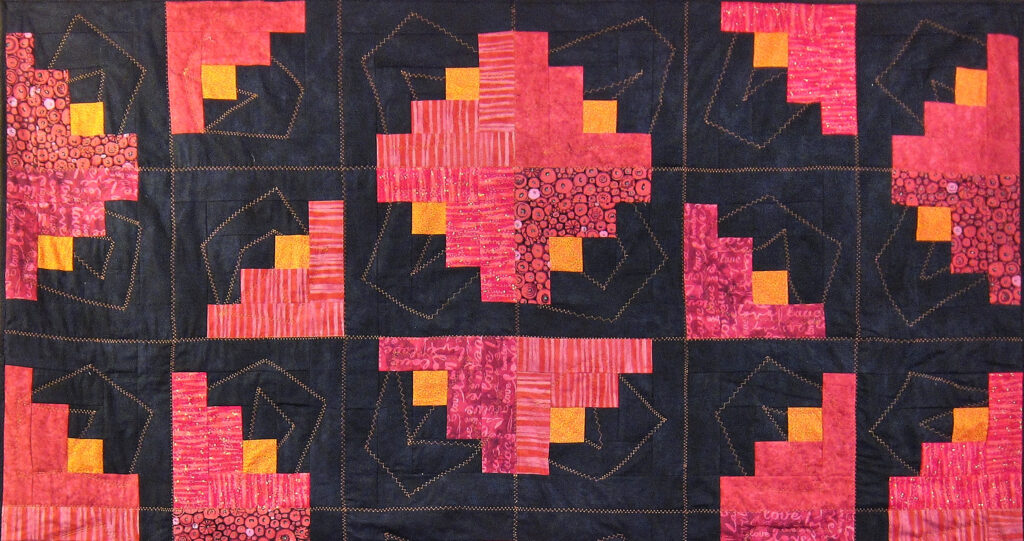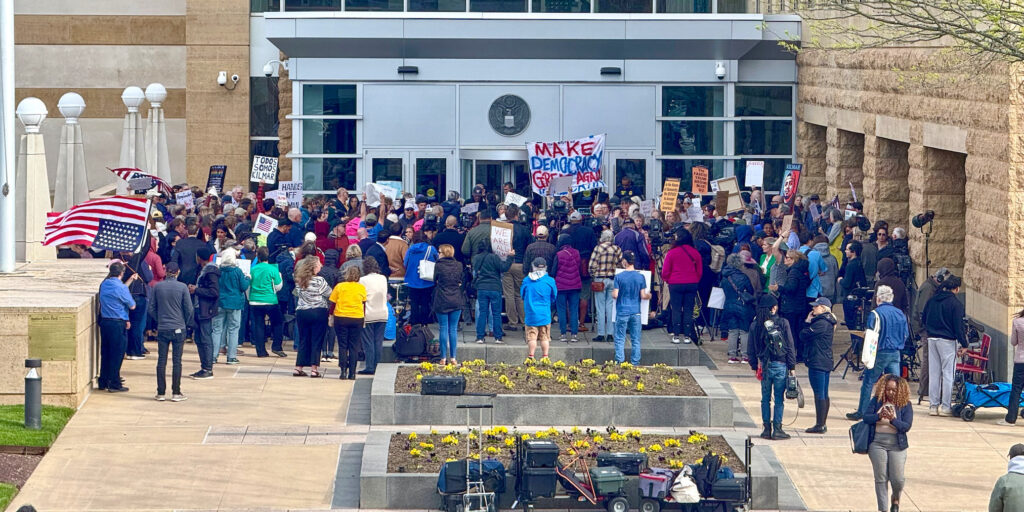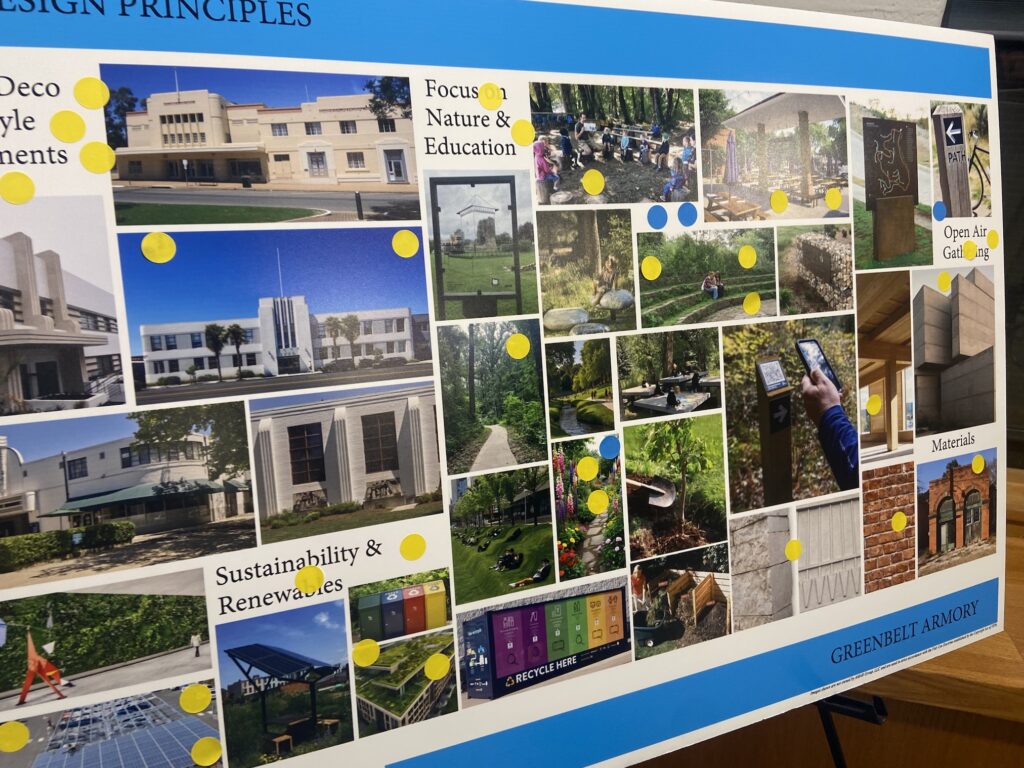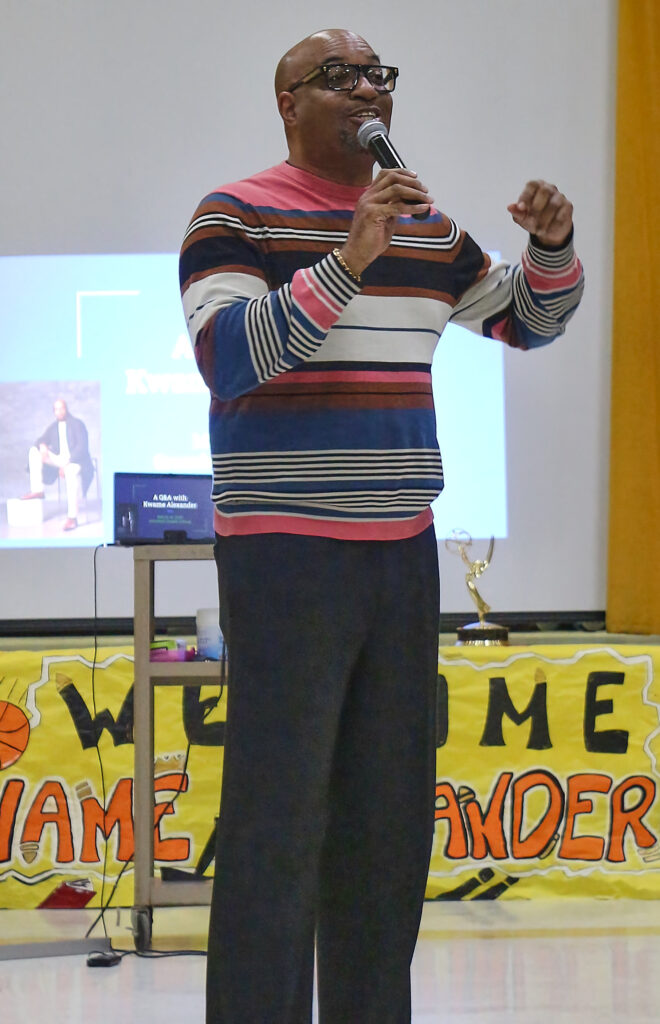Greenbelters are invited to attend an opening reception on Sunday, February 4, 1 to 3 p.m. for the new exhibition, PIECED: Fiber Arts by Fashion Designer Venus Stanton and the Uhuru Quilters Guild at the Community Center Art Gallery. PIECED brings together the work of nine artists of different generations and aesthetics who use similar construction techniques to achieve diverse creative ends. Visitors will be immersed in an environment of vibrant color, bold geometry and rich symbolism, including the personal, cultural and cosmic.
Stanton is represented in the exhibition by a series of ensembles from their Midnight Funk Association collection, their senior thesis project at the Maryland Institute College of Art, which led to a prestigious Windgate-Lamar Fellowship at the Center for Craft. Grounded in their perspective as a queer Black Midwesterner, their work reflects influences from 20th-century Black musicians, car shows, pulp-sci-fi movies, the great migration, the scenery of Lake Michigan and, most
importantly, their family. Stanton references media from their father’s youth as part of a back-and-forth “indirect form of communication and bonding.” “I created symbology in this collection,” the artist writes, “that tells stories about my upbringing and uses the human body as a vessel to mix my father’s stories with my own.”
Stanton’s Macho Man ensemble, with its giant, color-blocked stars in teal and lime green, is an ode to the WWF wrestler Macho Man Randy Savage. Savage was known for his outrageous and theatrical costumes, and was outspoken about his distaste for toxic masculinity.
Love’s in Need of Love Today derives its title from the opening track of Stevie Wonder’s album Songs in the Key of Life. The ensemble emulates the materiality, texture and form of records. Boots “armored” with vinyl are paired with a piped corset. The corset has a radiating circle motif in yellow, red and maroon, alluding to the album cover artwork. The song Stanton references speaks to the injustices of the world and the importance of love and compassion. They recall, “I specifically associate this song with my mother crying to it after the 2020 police brutality protests.”
Themes of liberation and new beginnings are encoded in several largely abstract works by the Uhuru Quilters. (Uhuru is the Swahili word for freedom). Artist NiYa Costley shares her unique reinterpretation of the Juneteenth flag, with its star, surrounding burst and the red and blue of the national flag. Renee Anderson is represented by a striking log cabin quilt in black, orange and magenta. As the design evolved, it reminded Anderson of flowers, prompting her to add abstract pot shapes in stylized quilt stitching. The flowers, she notes, serve as a “symbol of refresh, renewal and regeneration using past knowledge.”
While Stanton draws on the technical vocabulary and aesthetic of quilting in their fashion design, works by the Uhuru quilters likewise incorporate references to the power of clothing. Member Sandra Schmidt contributes an elegant, figurative composition in profile entitled The Headdress. “I was inspired to create this quilt from my visit to Senegal,” she writes. “Many of the women … wore traditional clothing and head wraps. The head wraps represent beauty and grace.” They provide “spiritual protection to the wearer and have been a powerful symbol of African culture for centuries.” A slightly more abstract reference is the African Queen quilt block pattern that appears in the tour de force bed-sized sampler quilt by Betty Shaw entitled Heritage.
Based in Prince George’s County, the Uhuru Quilters Guild has over 100 members from the Delaware-Maryland-Virginia area and far beyond. The mission of the Guild is to promote the work and accomplishments of African American quilters and to preserve the traditions, culture and history of quilting. The Guild shares this rich legacy with others through community service projects, workshops, training and exhibitions. The Guild has showcased quilts and spoken at the Smithsonian’s Folklife Festival, among other venues and celebrations.
PIECED: Fiber Arts by Fashion Designer Venus Stanton and the Uhuru Quilters Guild will be on view daily from February 3 through March 17 at the Community Center Art Gallery, located at 15 Crescent Road.
At the February 4 reception, Greenbelt Black History and Culture Committee member Joyce Bailey will offer remarks at approximately 2:15 p.m., commemorating her mother Lois K. Alexander-Lane who founded the Black Fashion Museum and who was herself a Greenbelt resident for several years. Additional activities on Sunday, February 4 will include a free, all-ages no-sew quilt block activity; advance sign-up is recommended at https://bit.ly/3RH2cgP.
City of Greenbelt Arts Programs are supported in part by the Maryland State Arts Council. For additional program information, visit greenbeltmd.gov/arts.




